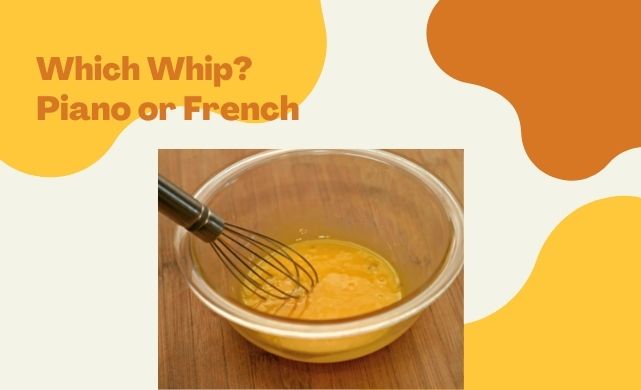Which Whip Should You Choose?
The fastest way to mix up some eggs, blend a batter or create a sauce is to use a wire whip or whisk, but which whip should you use? While there are several different foodservice whips and whisks, the two most commonly used are the French Whip and the Piano Whip. Most professional chefs and home cooking enthusiasts have their personal favorites. When I reach in my drawer filled with kitchen utensils for a wire whip, I’m selecting either a small 8” piano whip or a larger 14” French Whip. I use these because they are comfortable for me to handle and mainly, I’m selecting due to the size of the whip but like most commercial kitchen utensils, each whip has a specific purpose and function. Let’s compare the two whips..
Commercial Piano Whip
This whip gets its name from the look of the wires, which resemble piano strings. This is the whip most commonly found in residential and commercial kitchens. You may have also heard this whip referred to as a balloon whip because the shape looks similar to that of a hot air balloon. If you could only have one type of whip in your kitchen, you would be best served to select the piano whip. These whips make a good general utensil for blending, whipping and beating a wide variety of products in think to medium textures. You can use a piano whip to whip cream, beat eggs for omelets or egg whites for meringue, and they are ideal for many batters. The round shape of the whip wires fits well in round bowls and many pots and pans. The shortcoming of a piano whip is dry ingredients or dense mixtures can clump up between the wires. While it is ideal for beating eggs or liquids, it is not your best choice for dense or dry batters or dough.
French Whip
The second most commonly used commercial wire whip is the French Whip. Similar to a piano whip, this whip is differentiated by the longer narrower design of the wire whip end. This whip is more often utilized for blending sauces. The elongated shape lets you easily use this whip in deeper pots and in straight sided pots and pans making this a great utensil to use for blending soups or stews as well as sauces. Additionally, because the French whip has tightly spaced wires, it is not a good choice for blending dense or dry ingredients.
Other whip options include the dough whip, kettle whip, flat whisk and spiral whisk as well as the conical whip. Each whip is designed to perform specific tasks in the kitchen.
